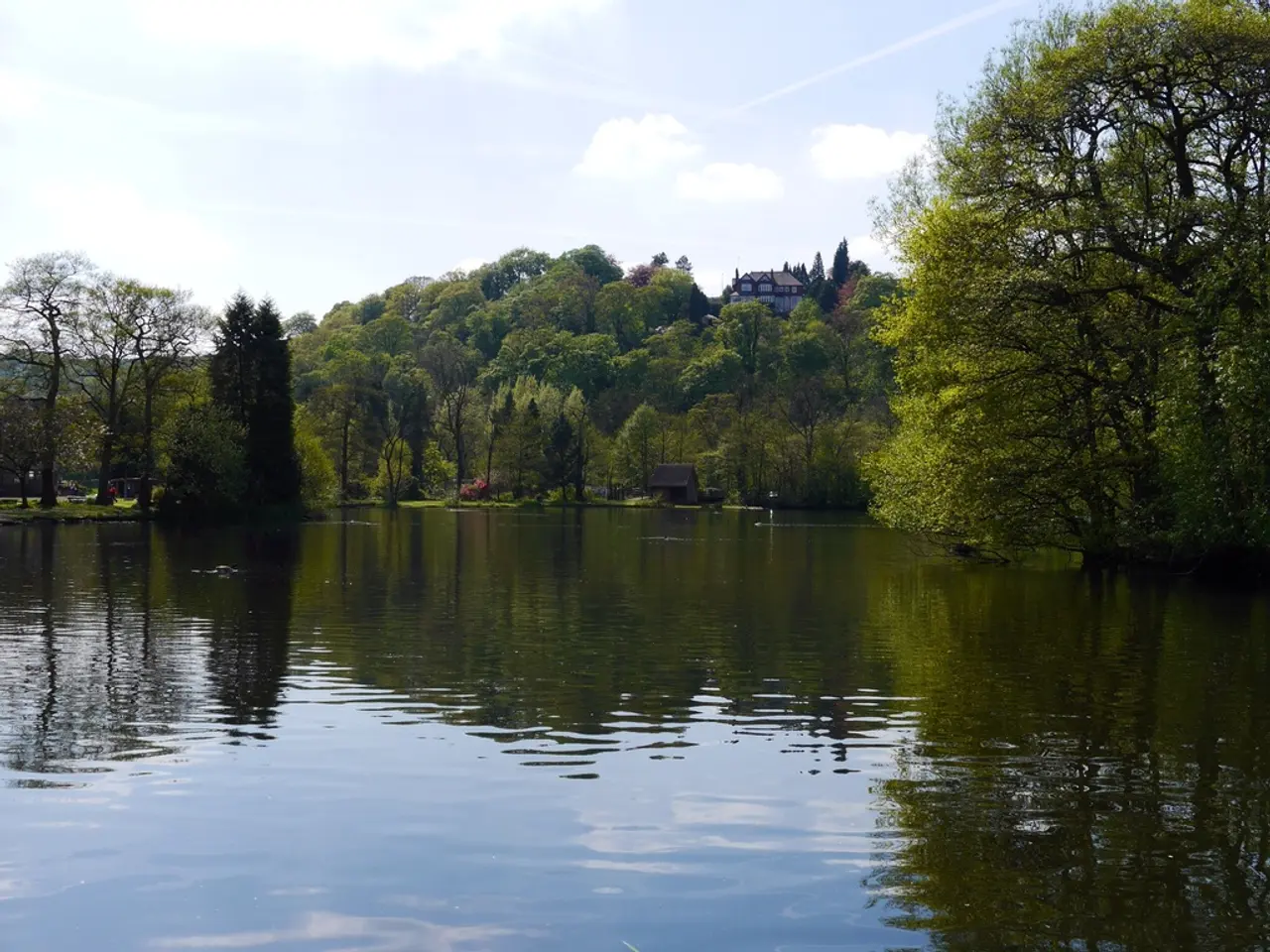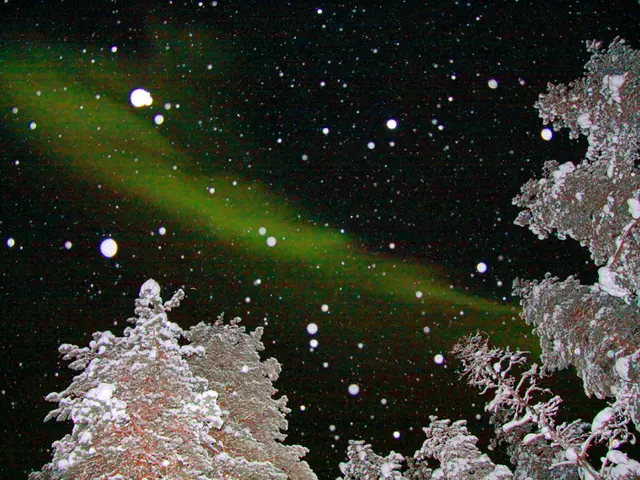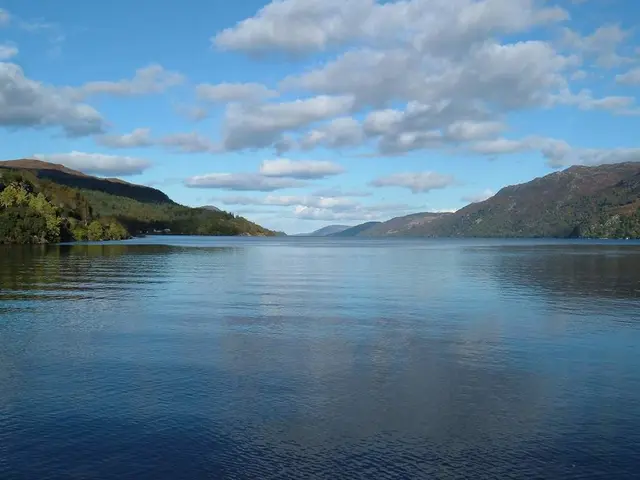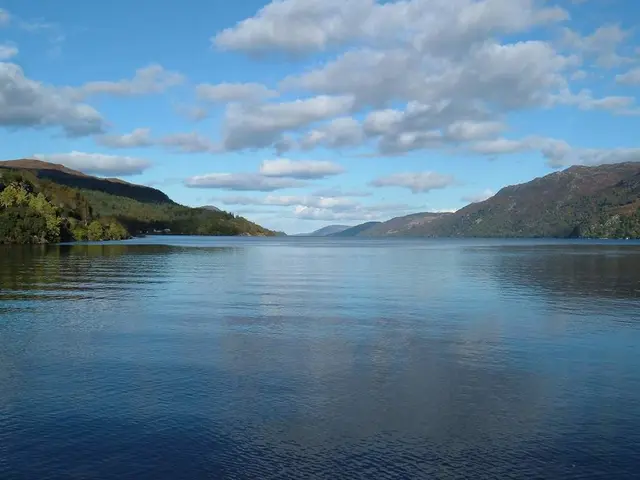Mendenhall Glacier in Alaska causes concern as areas of Juneau prepare for potential flooding due to water seeping through the glacier's barriers.
In August 2025, the city of Juneau, Alaska, experienced unprecedented flooding, with the Mendenhall River reaching a record height of 16.65 feet. This surpassed the previous record of 15.99 feet set just the year before [1][3]. The cause of this flood was an outburst from the Suicide Basin, an ice-dammed lake behind the Mendenhall Glacier.
The History and Causes of the Flooding
The Suicide Basin, located about 12 miles from Juneau, accumulates rainwater and snowmelt. When pressure builds sufficiently, it causes the glacier ice dam to partially fail, releasing a sudden, large outburst flood downstream. Such floods are not new, but they have increased in frequency and magnitude as climate change accelerates glacier melting and destabilizes the ice dam structures [1][2][3].
Recent Developments and Responses
In response to increasing flood risks and record-setting events, a Joint Flood Initiative was established in 2025. This collaborative effort involves various entities, including the National Weather Service, US Coast Guard, Alaska Homeland Security & Emergency Management, Alaska Department of Environmental Conservation, the city government of Juneau, local Indigenous organizations such as Tlingit & Haida, and other federal and state agencies. The initiative focuses on emergency preparedness, timely information sharing, coordinated communication, and community safety, pooling resources and public outreach efforts to minimise harm during floods [2].
Potential Solutions and Future Outlook
The flood danger from Mendenhall Glacier’s ice dam and Suicide Basin is expected to persist for another 25 to 60 years as long as the glacier continues acting as a dam to seal off the basin. Solutions focus on monitoring, emergency management, engineering and mitigation, community preparedness, and education and awareness campaigns [2].
While no permanent fix exists yet, potential interventions could include controlled drainage or structural reinforcements of the basin edges. However, these are complex and costly given the natural glacier dynamics [2]. In the meantime, residents are bracing for record floodwaters due to rainwater and snowmelt, with the flooding this year predicted to crest at between 16.3 and 16.8 feet [1].
Government agencies have installed temporary barriers to protect homes from damage, such as the temporary levee along the Mendenhall Riverbank, which is approximately 2.5 miles long and made up of around 10,000 "Hesco" barriers, intended to protect over 460 properties [1].
The Impact of the Flooding
Videos and reports from August 2025 showed the dramatic impact of the flood, including debris like trees floating down the swollen Mendenhall River, underscoring the destructive power of these glacial outburst floods [4]. The flooding is a yearly concern since 2011, and in recent years has caused damage to houses and homes [1].
The flooding is a result of the warming climate, with the Mendenhall Glacier retreating, creating a basin that fills with rainwater and snowmelt each spring and summer [1]. The U.S. Army Corps of Engineers is studying conditions in the region for a potential more permanent solution, such as a levee [1].
In summary, the record flooding in Juneau from the Mendenhall Glacier ice dam resulted from the sudden release of water from Suicide Basin, with causes linked to glacier melt and ice dam instability. Ongoing efforts emphasise monitoring, emergency coordination, and public preparedness while longer-term engineering solutions remain challenging. This risk will likely continue for decades due to the glacier’s natural behaviour and climate factors.
- Weather forecasting is crucial in anticipating potential flooding events in Seattle, given that the frequency and magnitude of such disasters have increased due to climate change, as observed in the city of Juneau, Alaska.
- The government, in collaboration with several entities such as the National Weather Service and local Indigenous organizations, is working on the Joint Flood Initiative in Juneau, focusing on emergency preparedness, information sharing, and community safety in response to the increasing flood risks.
- Environmental science and climate-change studies play a significant role in understanding the causes of accelerated glacier melting and the destabilization of ice dam structures, leading to increased flooding incidents like the one in Juneau.
- The Seattle government and its collaborators are considering temporary initiatives, such as the installation of temporary levees, to protect properties from the anticipated record floodwaters due to rainwater and snowmelt, following the example set by efforts in Juneau after experiencing similar flooding events.








